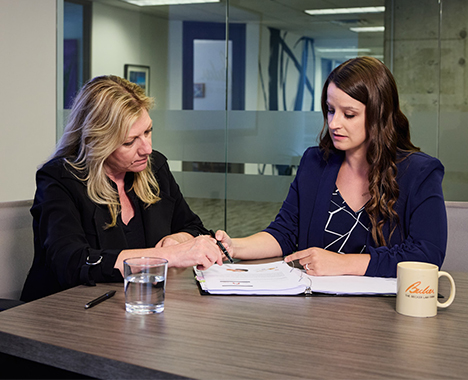Schedule a Consultation
216-621-3000Schedule a Consultation
216-621-3000In the majority of cases, your baby will be delivered by an obstetrician—perhaps the one you signed up, perhaps another from that group, or (still more unlikely), a random obstetrician who is available at the hospital you find yourself at. What happens, however, if you are delivering at an emergency room with no obstetrician available?
All licensed doctors have been through medical school. While it is preferable to have a doctor specialized in delivering babies to be the one delivering your baby, it is still preferable to have any kind of doctor when the other choice is someone whose most recent first aid training was the Boy Scouts from twenty years ago.
A doctor’s obligation is to provide treatment that is consistent with the standard of care. Standard of care is legal phrase which basically means that the doctor must act as a reasonable doctor in his position would act under similar circumstances. The difficulty here is figuring out what “reasonable” means. An emergency room doctor cannot be expected to have the in-depth knowledge that an obstetrician has. However, emergency room doctors are generalists—they must have enough knowledge to handle those problems that are most likely to occur. Shoulder dystocia, at one percent of all births, is common enough that it should be planned for.
Shoulder dystocia describes a situation where the baby gets stuck in the birth canal because his shoulder becomes lodged behind the mother’s pubic bone during labor. Essentially, delivery cannot continue normally because the baby is trapped mid-delivery.
This is a cause of brachial plexus injuries. The brachial plexus is a series of nerves in the neck area near the spinal cord. Those nerves run through the shoulders, arms and into the fingers. The nerves can be damaged because of tears and resulting scar tissue. The damage often occurs when a doctor, panicked because the baby is trapped, pulls or twists the baby in an incorrect matter to try to complete the delivery.
Emergency room doctors in particular should have at least a working knowledge of what’s expected in the event of a shoulder dystocia. Though certainly not official, EM Curious http://www.emcurious.com/blog-1/2015/3/28/shoulder-dystocia outlines a practical approach for non-obstetricians. First, try to get help. If there is an obstetrician anywhere near who can help, find them. At the very least, getting one on the phone to help walk the treating doctor through the steps is better than nothing.
The article recommends a mnemonic device, the old standby of rote medical school memorization, to help remind doctors what to do:
More on the correct maneuvers can be found here in our post on Shoulder Dystocia Birth Injuries. The important thing is that the doctor not panic, which invariably leads to greater injury. Furthermore, the doctor must give a reasonable effort to prevent harm by performing the maneuvers in the right order. In most cases, the McRoberts maneuver will solve the problem.
If your delivery was rushed and was not performed by an obstetrician, and your child was injured, contact our medical malpractice lawyers to evaluate your case and determine whether your doctor acted according to the standard of care. For more information on the requirements that doctors must follow, contact our medical malpractice attorneys at (440) 252-4399 or online for a free consultation.

